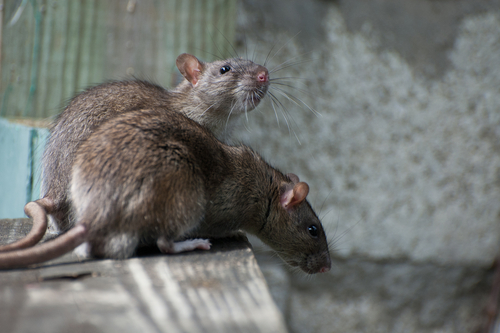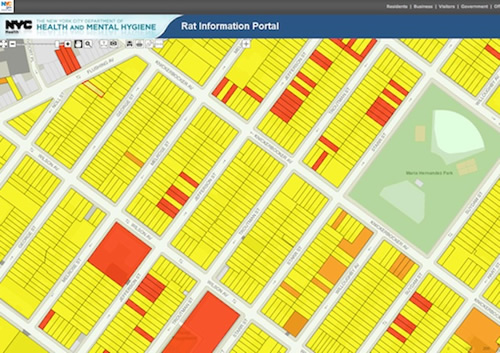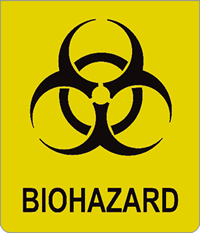
Who They Are
New York City rats are of The Norway Rat, or “brown” rat, variety. The average brown rat is 16 inches long and weighs 1 pound, though some do grow to 20 inches and weigh 2 pounds. They usually require only 1 ounce, or 28 grams, of food and water each day to live.
What They Do
These rats’ abilities include squeezing through holes the size of a quarter, leaping 4 feet sideways, falling 5 stories without injury, treading water for three days (adult rats), and chewing through pipes and cinder block.

Where To Find Them
New York City rats like to burrow, nest, and hide in soft dirt at ground level or below, and live in colonies, or families of 30 to 50 rats with 9 to a burrow. These rats will live between 100 and 400 feet from their food source, and in their lifetime will rarely travel more than 600 feet from where they are born.
You can find out more about New York City’s population at the NYC Rat Information Portal.
A Rapidly Growing Species
In New York City, the rat population is about 25% the size of human population – that’s about 2 million rats! Brown rats live for about 1 year. They begin mating at two or three months old, and produce litters of about a dozen “pups” every two months. Recently, the rat infestation has grown even faster than normal due to budget reductions and wasteful food disposal.
A Health Concern

New York City rats carry pathogens that cause serious illness in humans, especially children, including bacteria that cause food poisoning, like Salmonella and E. coli, as well as pathogens that cause serious and sometimes fatal fevers and viruses. Additionally rats carry fleas, lice, and mites that cause serious disease for humans too, and increased exposure to rodent hair, droppings and urine can lead to higher risk of allergies and asthma. Disease is spread when humans or their pets come into contact with rat saliva, urine, or feces.
The War On Rats
Current Climate
Rat infestation is a serious and widespread issue in the New York metro area!
In 2014, Animal Planet named New York the “Worst Rat City in the World” and rodentologist Bobby Corrigan called the city “USA’s No. 1 Pestropolis”
As recently as 2013, more than 11,000 inspections citywide failed for active rat signs (ARS) – that’s nearly 12% of ALL initial inspections made on across the five boroughs
Conditions that contribute to the rat infestation include accumulation of garbage, waste material, and water, and garbage that is not kept in tightly covered rat-resistant trash cans – all of which are commonplace in New York City
Initiatives Against Infestation
New York City and its surrounding areas have endured this serious rat infestation for too long!
According to the Department of Health, rodent baiting is an effective way to wipe out rats in the city
Mayor de Blasio has recently worked to improve the situation, declaring a “War on Rats” and rolling out a successful $400,000 rodent control pilot program in seven neighborhoods. Since its start, these neighborhoods saw about an 80 to 90 percent decrease in rat sightings
The City of New York now prepares implementation of the $3 million citywide expansion of this successful rat extermination pilot program

“Rats are one New York City institution that we’re happy to get rid of.”
– Mayor Bill de Blasio

“This is about more than just aesthetics. We have rats who are going into cars and eating out electrical cables. We have rats that are entering homes. They carry disease.”
– District 7 Councilman Mark Levine

“What we’ve seen is, there are neighborhoods where no matter what building owners do, there is a ready supply of rats that live in parks, medians, or sewers that are there to replace them.”
– Deputy Commissioner for Environmental Health Daniel Kass
The Solution: Ekomille
Rat Trap, Inc. is an innovative and effective system of rodent control. Unlike other conventional attempts to combat the growing rat population in New York City and the greater New York area – including the use of dangerous traps, pesticides, and poisons – Rat Trap, Inc. is a system that poses no threat to public health or the environment.
All-Natural
The system involves an electromechanical machine that attracts rat and mice with natural feed and other food substances as opposed to artificial and potentially harmful bait.
Controls Spread of Diseases
The rodents are trapped within the mechanism and their carcasses are isolated within, preventing the spread of infectious disease
Tested & Proven
Rat Trap, Inc.’s system has been used in Europe for more than 10 years, and able to trap as many as 80 rats each month
Flexible Usage
Rat Trap, Inc.’s mechanism can be used safely and effectively indoors or outdoors, and can be floor-mounted or suspended. Special accessories further ensure confidentiality, security, and ease of positioning
Ensures safety for 1) people, 2) non-targeted animals, AND 3) the environment
SAFE, HYGENIC, AND ECOLOGICALLY SOUND!
